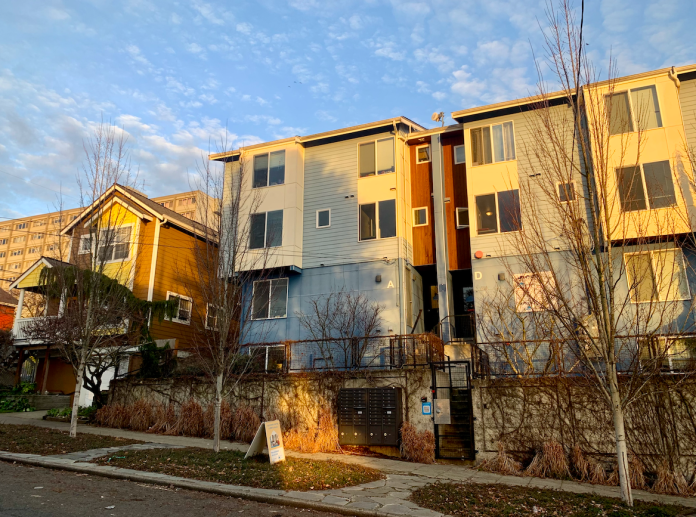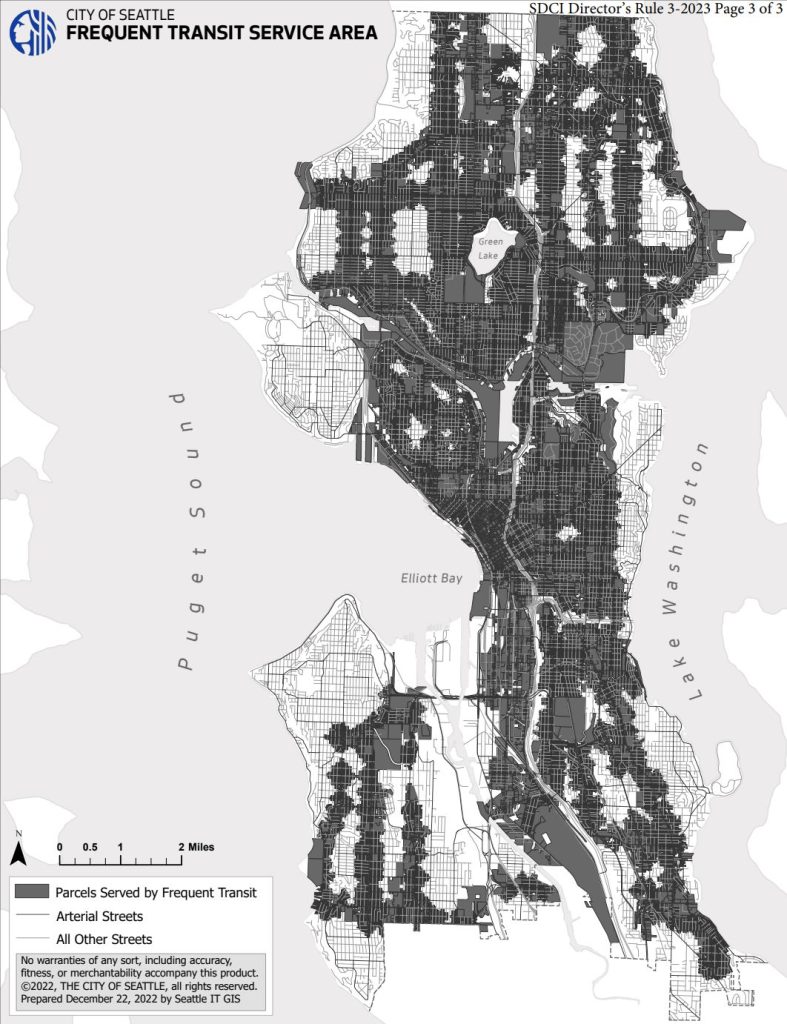
One of the few housing wins in the Washington State Legislature this year was passage of a co-living housing bill sponsored by Representatives Mia Gregerson (D-33, SeaTac) and Andrew Barkis (R-2, Lacey). By the end of 2025, cities and counties will have to fully implement that by removing numerous barriers to co-living housing — micro-apartments with communal kitchens, traditionally known as single room occupancies or boarding houses. Seattle already has released draft legislation that would go a long toward implementing the state statute this year, but there are some aspects that may need fine-tuning by the city council or another round of legislation next year to avoid run afoul of the state mandate.
In brief, House Bill 1998 requires local governments to permit co-living housing by-right on any urban lot zoned for “at least six multifamily residential units, including on a lot zoned for mixed use development.” With the aim of easing the crisis around homelessness and housing affordability and avoiding local obstruction that has often sunk low-income housing projects, the state also preempts local governments from limiting micro-apartment development in a variety of ways, including the following:
- Dimensional standards for co-living sleeping rooms cannot be stricter than state building codes.
- Local jurisdictions cannot mandate a mix of unit sizes or number of bedrooms in co-living projects.
- Jurisdictions cannot require other uses in co-living developments.
- Car parking mandates are prohibited within a half-mile of a major transit stop and limited to no more than 0.25 car parking spaces per sleeping room otherwise.
- More restrictive development standards and permitting processes for co-living housing than other multifamily housing in the same zone are banned.
- Onerous density limits are relaxed by requiring jurisdictions to count a sleeping room in a co-living housing development as no more than 0.25 of a dwelling unit for density purposes.
For the purposes of the state statute, a major transit stop is essentially any stop funded or expanded by Sound Transit, bus rapid transit stops, freeway-running bus stops, and other stops served by frequent transit.
Seattle’s first stab at the state statute would make co-living housing, deemed “congregate housing” in the City’s Land Use Code, an outright permitted use in all multifamily and commercial zones where it is currently either prohibited or highly restricted to very specific circumstances. For instance, in Lowrise zones, co-living housing is only permitted if it is owned by a non-profit organization, licensed by the state to provide on-site supportive services for seniors or people with disabilities, or is owned by a college or university or otherwise affiliated with such an institution (e.g., through a sorority or fraternity chapter).
As a result, Seattle will be allowing co-living housing in all varieties of Lowrise (LR), Midrise (MR), Highrise (HR), Commercial (C), and Neighborhood Commercial (NC) zones. The use is already broadly allowed in Seattle Mixed (SM) and Downtown zones.
To satisfy other aspects of the statute, Seattle will simplify its standards for co-living housing by eliminating specific food preparation area and communal area requirements — defaulting to normal amenity standards that may be required for other multifamily uses in specific zones — and partially reducing car parking requirements.
However, there are some open questions about the legislation.
For starters, Seattle’s proposed parking reduction only applies to currently established frequent transit service areas (FTSAs). These don’t comport with the state law.

FTSAs under the City’s current Land Use Code and Director’s Rule only extend a quarter-mile walking distance from bus stops. The state statute requires this to extend a half-mile for co-living housing, and there may be other technical discrepancies with the City regulation, at least for implementation of co-living requirements. The City’s FTSAs still cover large swaths of the city, but potentially could be excluding some areas required to allow co-living housing. And there appears to be discrepancies with other car parking regulations, not currently proposed for modification to fully comply with the state statute.
Secondly, Seattle will be required to implement House Bill 1110, the state middle housing law, by July 2025 which mandates some lower-density areas of the city to permit middle housing (technically multifamily uses) with at least six dwelling units per lot. A reasonable interpretation of the HB 1998 statute is that those areas would also need to allow for co-living housing. Language in the SEPA Checklist seems to acknowledge this stating: “Additional legislative reforms concerning how congregate residences are permitted or regulated in Neighborhood Residential zones may be enacted following adoption of the One Seattle Comprehensive Plan major update.”
The Harrell Administration opted to apply for a partial exemption under HB 1110 to cap zoning at triplexes rather than sixplexes in single family zones that are also high-displacement risk areas near frequent transit. One potential side effect of this policy is that co-living buildings could continue to be banned in these areas despite the affordability they could offer. Harrell officials hope this exemption can be permanent, but the bill’s architect says it was only intended to be a temporary measure. Thus, micro-apartments may ultimately need to be permitted in these exemption areas as well.
In the City’s public notice and environmental determination, required under the State Environmental Policy Act (SEPA), officials anticipate adoption of an ordinance somewhere between this fall and early next year.
Doug Trumm is publisher of The Urbanist. An Urbanist writer since 2015, he dreams of pedestrian streets, bus lanes, and a mass-timber building spree to end our housing crisis. He graduated from the Evans School of Public Policy and Governance at the University of Washington in 2019. He lives in Seattle's Fremont neighborhood and loves to explore the city by foot and by bike.


